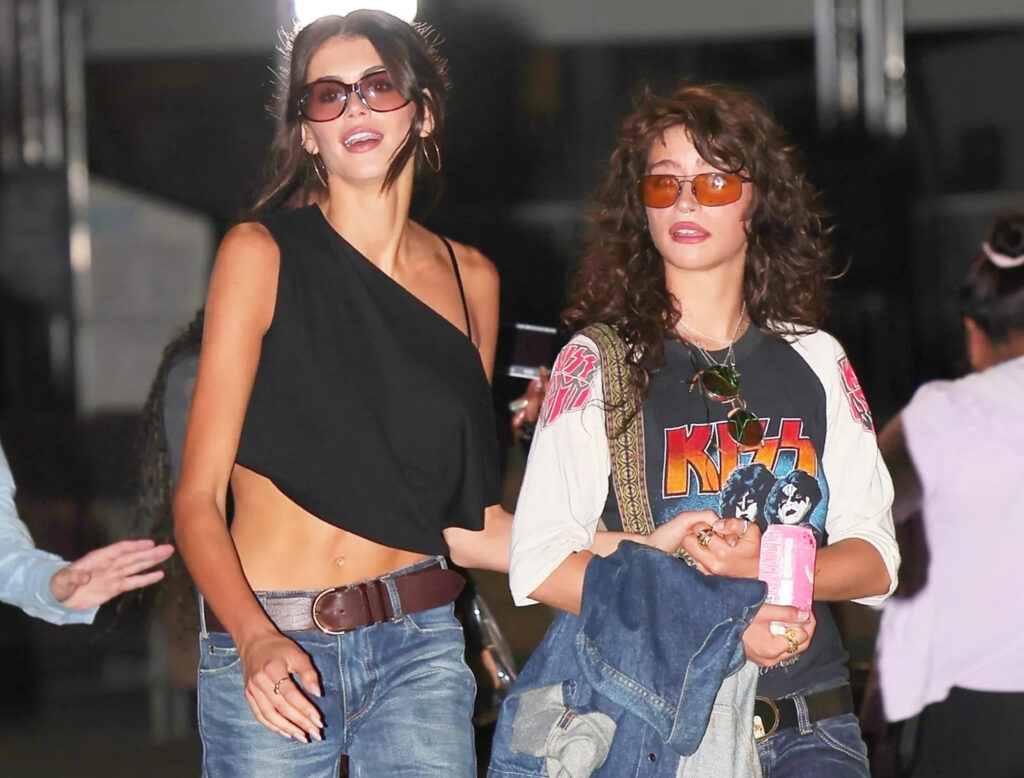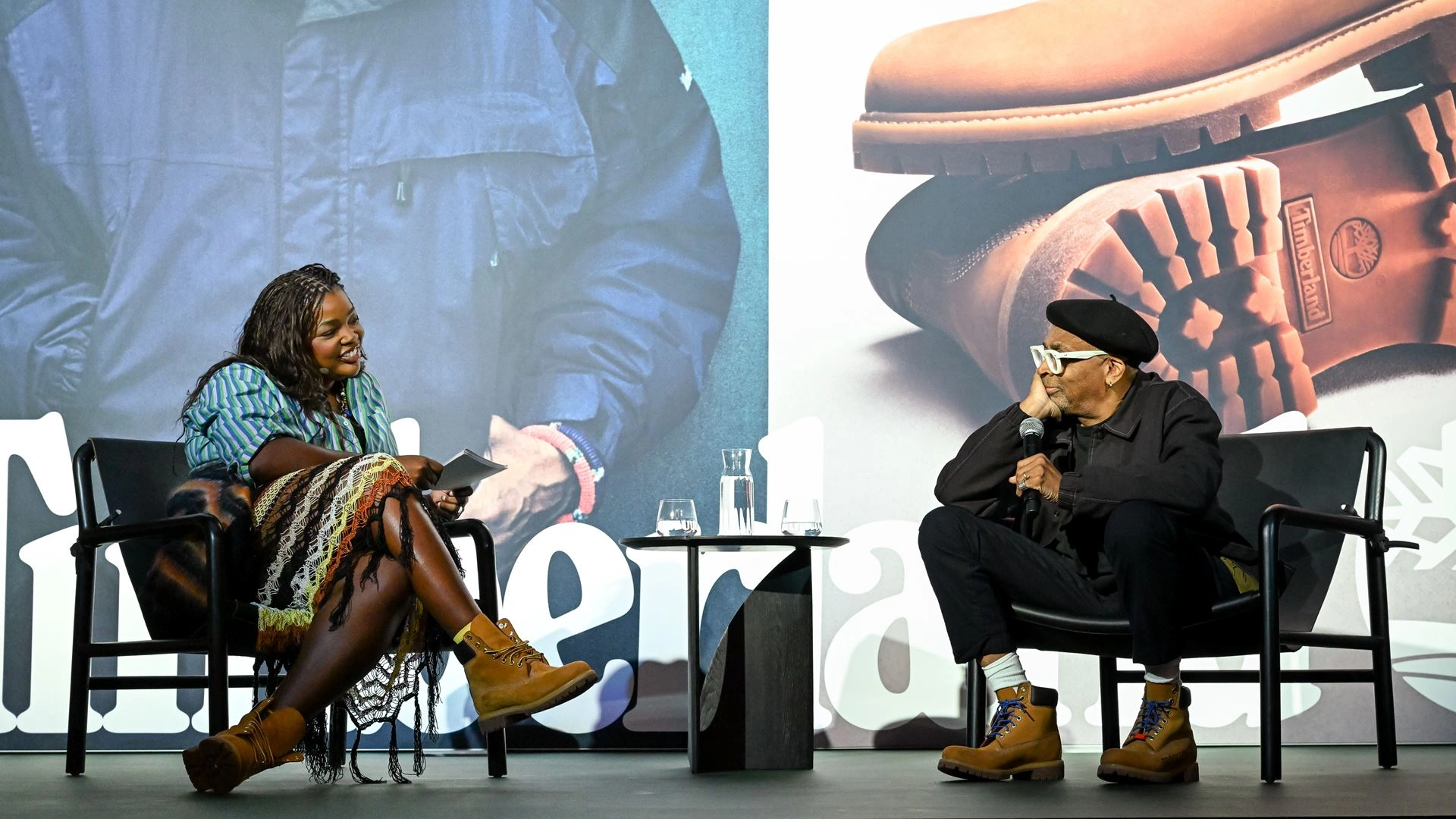In the ever-revolving carousel of fashion, what was once discarded as passé eventually returns—with new styling, new stakes, and often a new generation wearing it like it was invented yesterday. Few trends embody this cycle more powerfully than the Y2K aesthetic: a cacophony of low-rise jeans, slinky tanks, chunky belts, and wire-thin sunglasses that once reigned supreme in the late ‘90s and early 2000s. And at the forefront of this revival? Kaia Gerber—a generational fashion figure born of legacy and raised by the algorithm.
Gerber may be the carbon copy of her mother, Cindy Crawford, the legendary supermodel whose beauty helped define the glamour of the 1990s. But Kaia is no mere archival footnote. She is, instead, the quintessential Gen Z style leader: part fashion insider, part cultural sponge, and wholly committed to reclaiming what millennials still shudder at—the dreaded low-rise jean.
But let’s be clear: what Kaia Gerber is doing with early-aughts fashion isn’t parody, nostalgia, or even irony. It’s reclamation. She is part of a growing cohort of twenty-somethings rewriting the narrative of the most polarizing decade in fashion history—not just by wearing it, but by wearing it differently. It’s a subtle yet potent distinction, and one that speaks to a broader cultural shift in how we view fashion trauma, body politics, and generational aesthetics.
Take, for instance, Gerber’s recent appearance at Beyoncé’s Cowboy Carter Tour in Los Angeles. The Mango muse pulled up in a look that managed to channel both yeehaw and y2k in a single breath. She wore medium-wash low-rise flares with a thick brown leather belt—an ensemble straight from the 2003 Hollister stockroom—and made it feel like a fresh editorial moment. But unlike the original era’s razor-thin waists and heavily curated body ideals, Kaia’s version felt lived-in, unbothered, even pragmatic. Her look wasn’t built to seduce, but to exist.
To understand why this is significant, you have to reckon with what low-rise denim meant the first time around. In the early 2000s, low-rise jeans were less a style choice and more a societal expectation—particularly for women in the spotlight. They demanded flat stomachs and visible hip bones, often accompanied by crop tops and public scrutiny. Celebrities like Britney Spears and Paris Hilton were not just fashion icons but living billboards for unattainable body types. The jeans weren’t just low; they were unforgiving. And for an entire generation of girls growing up during this time, they became a source of deep-seated discomfort, even shame.
Enter Gen Z. Born at the tail end of the Y2K explosion, this generation didn’t live through low-rise; they inherited its iconography. And that distance has given them the power to approach it with curiosity rather than baggage. Kaia Gerber and her contemporaries—think Bella Hadid, Olivia Rodrigo, even Euphoria’s costume department—have taken the very garments that haunted their older siblings and reframed them with casual confidence. The difference isn’t just in the cut—it’s in the context.
In Kaia’s hands, the low-rise jean becomes a soft weapon against conformity. There’s no longer an obligation to look like a Maxim cover model; there’s only the desire to express. The baby tees she pairs them with are less about midriff flaunting and more about silhouette play. And the chunky belt? It isn’t there to cinch the waist—it’s there to say, this is intentional.
Much of this recalibration has to do with how Kaia Gerber herself has come of age in fashion. Though the child of royalty, she’s never leaned on her pedigree as a crutch. From the moment she walked her first runway for Calvin Klein in 2017, it was clear she intended to build a career on work, not lineage. She’s modeled for nearly every major fashion house, from Chanel to Celine, but she’s just as comfortable in a coffee shop wearing vintage Adidas and thrifted knits. That duality—the ability to code-switch between high fashion and High School Musical cosplay—is key to understanding her Gen Z appeal.
She doesn’t just wear the clothes; she translates them.
Perhaps the most interesting element of Gerber’s influence is the way it exists both inside and outside the fashion system. On one hand, she’s walked for Valentino and opened for Miu Miu. On the other, she’s been photographed on hikes with Austin Butler, dressed in head-to-toe “normcore” staples like New Balance sneakers and oversized hoodies. This dualism echoes the very nature of Gen Z style: it’s deeply referential, but almost allergic to singular identity. A Gen Z girl can dress like a Bratz doll one day and a 1990s catalog model the next, and Kaia is the perfect embodiment of that elasticity.
Her style is not just aesthetic; it’s anthropological.
And while her preference for low-rise jeans and other Y2K signatures may seem like frivolous trend-hopping to some, there is actually deep generational work being done here. By reanimating these silhouettes through new proportions, materials, and energies, Gerber and her peers are de-weaponizing garments that once dictated body shame. They are reclaiming agency, dismantling beauty hierarchies, and proving that any era can be remixed—so long as the wearers are in control.
Moreover, Kaia’s insistence on comfort and casualness is itself a protest. In an industry that still rewards female models for looking polished and desirable, she leans into what feels right. It’s why the giant Apple headphones she wears around town have become part of her signature. They aren’t merely functional—they’re anti-aesthetic. Oversized, clunky, and wonderfully analog in a Bluetooth world, they signal detachment from the male gaze and reattachment to one’s own headspace. It’s the Gen Z crown.
There is also something uniquely feminine about her command of nostalgia. Where millennial nostalgia often leans toward protection—archiving, gatekeeping, romanticizing—Gen Z’s version, as seen through Kaia, is more irreverent and tactile. It’s about digging through the past, pulling out what still feels alive, and pairing it with something entirely new. It’s a remix culture steeped not in loyalty, but in possibility.
Kaia Gerber is not a fashion revolutionary in the traditional sense. She is not marching runways in protest, nor is she loudly critiquing the industry’s failures. Her work is quieter, more embodied. She shows us what happens when you wear history not as burden, but as canvas. And in doing so, she becomes more than a model—she becomes a generational index, cataloging what fashion meant then, and what it can mean now.
It’s this very quality that makes her style so compelling. Whether she’s reviving low-rise jeans or resurrecting early-aughts belt loops, it’s never about irony or camp. It’s about sincerity—about what it feels like to live in clothes that once dictated shame and now allow freedom. She wears the ghost of a trend, and in doing so, makes it human again.
And maybe that’s the lesson in Kaia Gerber’s Gen Z y2k: that fashion can be an act of repair, of reckoning, of return. That wearing the past can mean re-writing it. That even the most controversial denim cut of all time can find new life—not by being hidden, but by being seen.
Seen not for what it once represented, but for what it now becomes.
A symbol, not of conformity, but of change.
No comments yet.









